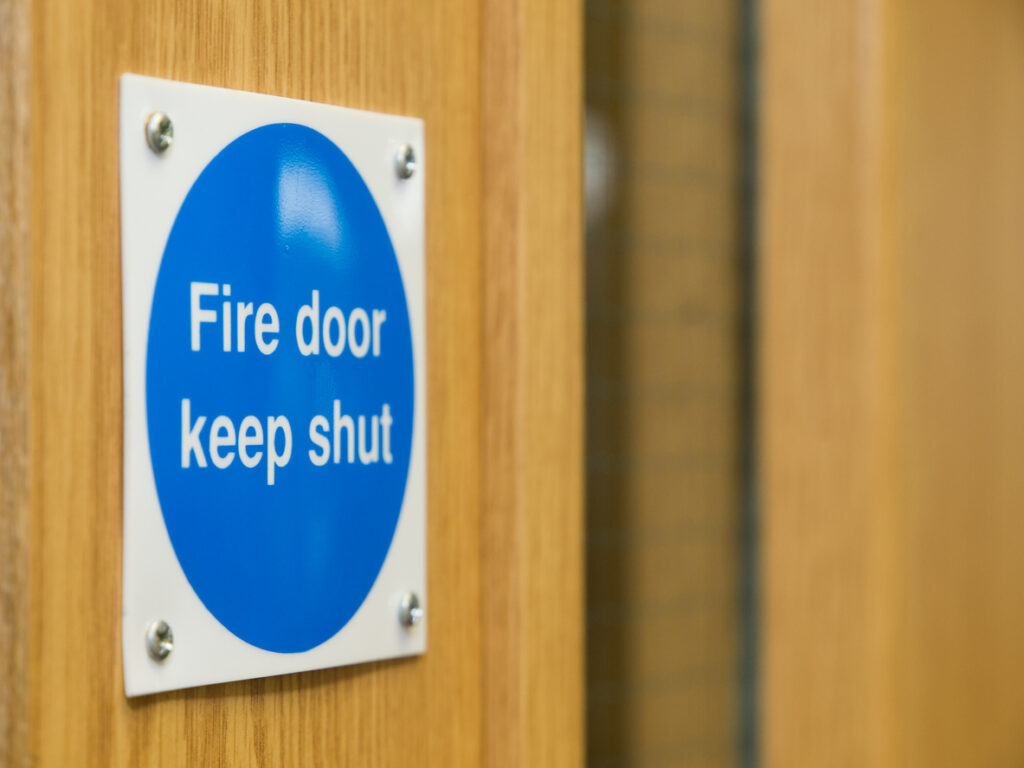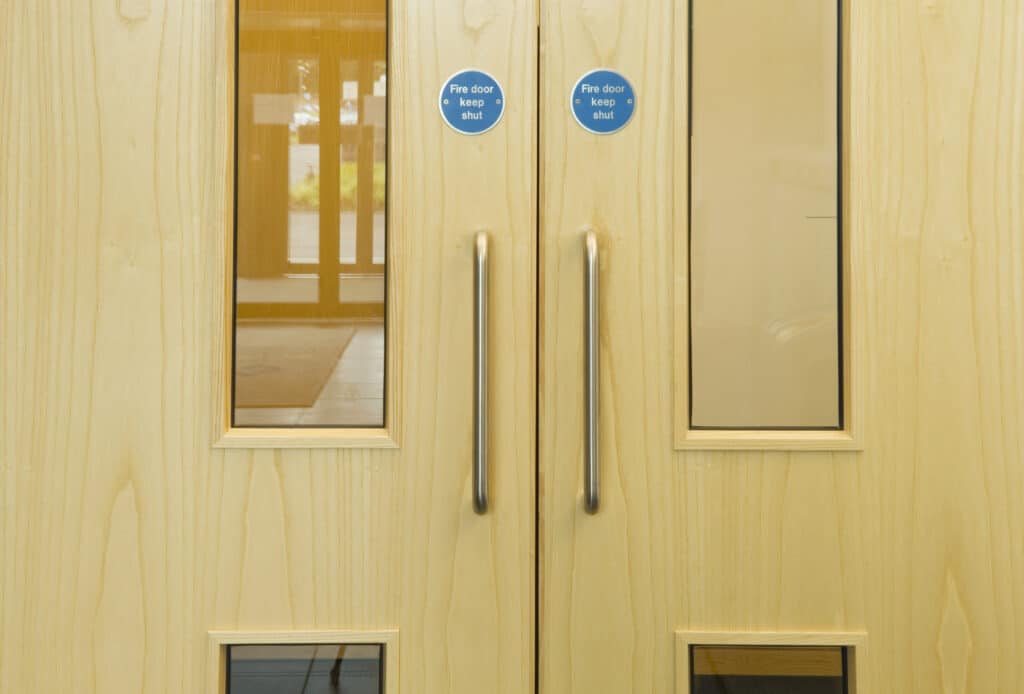Knowing how, when, and why to check fire doors is essential for property owners in 2024. At Clifton Energy, we’re experts in installing and inspecting fire doors, and we’ve put this informative blog together to help building owners understand their obligations. Changes have come into effect following the government’s Grenfell inquiry, and building owners across Surrey may not be aware that legislation has been updated.
To ensure buildings and occupants are safe, all guidance and legislation should be followed closely, and everything regarding fire door inspections has been compiled into a handy list below. Read on to learn more about the most recent legislation around fire doors and its meaning.
What Checks Are Required?
Unlike smoke alarms and emergency lighting, fire doors aren’t subject to fixed testing procedures. However, online guidance is in place to ensure that these doors are fit for purpose, damage-free, and ready to face the danger posed by fire and smoke. These checks should be carried out by experienced, knowledgeable persons, and Clifton Energy’s team of energy consultants is on hand to deliver first-class services.

Details about the checks are found below:
Mechanisms
The mechanisms attached to fire doors are vital in containing the spread of fire, smoke, and toxic gases. The spring-loaded attachment automatically closes the door, creating a tight seal from any angle. In an emergency, these doors can also be set up to close as soon as the alarm is raised. Testing the mechanism is essential, as any aspect failing can be catastrophic in an emergency.
Hinges
A fire door hinge should be checked regularly to inspect damage or general wear and tear. Any damage to the hinge can compromise the entire door, leading to the door dragging or sticking when opened. As well as slowing down potential escape routes, this sticking can cause doors to stay open, worsening the risk of fire spreading.
Smoke Seals
Smoke seals are one of the most essential parts of a fire door. These seals prevent smoke and toxic gases from spreading into corridors in the event of a fire, so any damage or wear can be dangerous. Especially in high-traffic areas, erosion can be expected on these seals, so regular inspections are vitally important.
Door
The door should also be thoroughly checked for damage, no matter how small. Cracks and chips can quickly spread and compromise the door, so they must be dealt with quickly. Many fire doors also have glass panels, which should be checked to ensure a good fit to avoid smoke and toxic gases from seeping through. The door should align correctly with the mechanism, hinges, frame, and seals. Otherwise, its effectiveness will be lessened.
Frame
The frame should also be checked once the door is confirmed safe. If the frame doesn’t match up with the door, it makes it easier for fire, smoke, and gases to get into common areas. These doors are designed to stop fire in its tracks, and loose fitting can prevent this.
Signage
Clear, informative signage is legally required, and it can often be the difference between successfully evacuating a building and not. There are four main applications in the UK:
- A safety sign explaining what to do in case of fire (known as a ‘Fire Action Notice’)
- Safety signs marking fire exit routes, doors, and assembly points
- Safety signs showing the location of fire-fighting equipment such as extinguishers
- Warning and Prohibition safety signs such as ‘Danger’ or ‘No Smoking’
- These should all be checked as part of the inspection and replaced if missing.
Appropriate Use
To ensure fire doors can be as effective as possible, they need to be used appropriately. When doors are propped open to increase airflow in the summer or blocked with rubbish and personal belongings, they can’t carry out their purpose. Inspecting these areas and ensuring that they’re used properly is an overlooked yet important part of the process.
How Often Are Checks Carried out?
Most fire doors need to be checked at least every six months. However, new government legislation from January 2023 means that multi-occupied buildings at least 11m tall need to be inspected quarterly. This change, made in the aftermath of the Grenfell inquiry, is designed to make high-rise buildings safer places to live. Other anomalies include newly installed doors and properties that have recently opened. In both of these instances, doors should be checked once a month.
These timescales are provided as an example, with more thorough checks required where fire doors are in constant use. High-traffic areas can lead to increased wear and tear on these doors, and this can mean compromised safety for the rest of the building. Similarly, if there are issues in the surrounding areas, for example in the walls, floors, or ceilings, doors should be checked at the same time. Weaknesses can give fire an easier path through buildings, putting occupants at greater risk.

How Should Inspections Be Recorded?
All inspections and subsequent maintenance should be appropriately recorded. This information acts as proof that the work has taken place, and it can also protect property owners in an instance where a fire door fails. The recording of inspections creates a clear audit trail, and this is vitally important. As with electrical inspections, the recording of these checks shouldn’t be neglected. Alongside offering protection in potential legal disputes, it provides a framework moving forward. The date will show when the next inspection is due, and this can be shared with the wider company even in the case of illness or absence.
How Does Clifton Energy Help?
At Clifton Energy, our certified assessors are on hand to provide effective fire door inspections. We meticulously evaluate the structural integrity of your fire doors, offering practical recommendations to enhance safety and compliance.
Trust Clifton Energy for your fire door inspections in Surrey, Croydon, and London and ensure your property’s and its occupants’ safety, all while staying fully aligned with relevant regulations. Whether you need a fire door installation or a free quote on an inspection for all your fire doors on the premises, get in touch today!